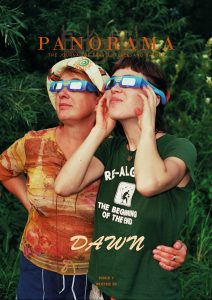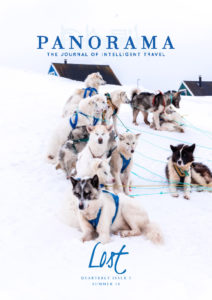Time changes everything. It doesn’t take much to realize this, but it may take a hundred years or more to notice that a moment is but a border that holds us firm in an eternal present.
From the outside, all cities seem opposed to nature. They are, in effect, concrete and glass monstrosities that inhibit the growth of forests, supplant animal ecosystems, and divert natural flows of water such that humans thrive at the expense of nearly every other living creature. Thus, a population as large as Busan’s 3.4 million inhabitants would seem to preclude it from belonging to the Thoreauvian domain of the natural world.
However, what might seem to constitute a rather significant population is actually a tiny community.
Shanghai, just a 90 minute flight west is made up of nearly twenty million people; in the opposite direction and an equally short distance away, Tokyo and the surrounding suburbs have collided into one another to add up to an astounding thirty-one million; and like these other megacities, Seoul, the capital of South Korea, is responsible for housing just under ten million, but when one takes into account the numerous satellite cities that were once isolated by the natural landscape, but which have since grown into one another in industrial and technological spurts, then the contiguous population of Korea’s only megacity swells to well over twenty-five million—a concentration that amounts to over half the country.
In contrast to these grossly populous megacities, Busan is practically a village, and despite the millions of inhabitants that call it home, the city itself is rather small.
Hewed into a valley by immovable mountains, stubborn farms, and the open sea, Busan—like most other East Asian cities—has built up rather than out, such that a 30 minute subway ride is enough to move from one end of the city to the other.
However, what Busan lacks in sheer landmass, it makes up for in height.
The average building might only be 4 or 5 stories tall, but there is a preponderance of architecture in excess of 15 stories and whole neighborhoods where the apartments and offices soar 200 feet or more into the air. In this regard Busan is undeniably a city, but in its scope and scale it is a city that allows for the sort of transcendental meditations that larger cities inhibit. It is also a place where nature finds a way to flourish.
*****
When I first arrived, the city seemed completely undisposed to the production of a thoughtful, carefully considered existence vis-à-vis Henry David Thoreau. Busan was incomprehensibly large and seemingly unknowable. In fact, its height, its scope, and even its depths were astounding. Having grown up in a leafy California suburb, the density of a city like Busan was unimaginable. From over-crowded bus stops on bustling streets to wet bars and equally well-lubricated restaurants, the city buzzed with the unending presence and vigor of its inhabitants.
There were, for instance, entire neighborhoods full of twenty-five story apartment buildings housing upwards of eight families per floor. There were also thousands of bubble-gum-bright signs alluding to the hum of activity taking place around the clock. And even the roads remained clogged with cars, trucks, and scooters from day through night.
Based on first impressions, Busan seemed to have no room for solitude or quiet contemplation.
And yet, in the skinny northern end of the city, a ribbon of road stretching far from the bustle of Seomyeon and farther still from glitzy Haeundae beach leads to a quiet place. As this road extends beyond the last inhabited buildings of suburban Geumjeong-gu, it becomes a tree lined path which dwindles into nothing more than a simple trail on a mountain. And upon this trail, hikers find their way out of the morass and into an older, wiser world.
*****
This trail, the one at the edge of the city, rises to a ridge that runs along an ancient path set beside some of the oldest stone walls of Geumjeong Sanseong, a fortress named after the mountain it straddles. Meandering from slope to slope, the fortress path climbs a succession of rugged peaks crowned by crenelated towers. And at the top of each tower hikers look out to the horizon where the fortress wall bends toward a temple nestled in deep pines fed by a summer stream.
On Geumjeong mountain, the only native life other than hikers, monks, and restaurateurs are ferns, tall green grasses, pines, and their wide shady cousin the yew. Of course, this verdant summer foliage houses all manner of bugs and insects, and the trails are also alive with the chirp of songbirds hidden in the forest canopy, but there is not a single large mammal roaming these hills.
The wild beasts had been eradicated long ago. The postwar explosion of civilization and subsequent incursion of the city reduced animal habitats such that vicious Siberian tigers, white chested Asian black bears, and wild water deer are but long lost memories.
In this regard Geumjeong mountain might feel empty, but the clusters of low wooden platforms upon which hikers sit cross-legged to eat rich, soybean stew prove otherwise. At regular intervals along the trail, outdoor kitchen cum restaurants festooned with molded plastic armchairs are ready to host battalions of hungry hikers. And scattered among the pines customers sit down to enjoy bowls of spicy, instant noodles and oven baked eggs.
Despite the absence of wildlife, the mountain is far from empty; in fact, Geumjeong mountain is probably more crowded than any point in its history: full of hikers out to enjoy the most pleasant aspects of nature—cool streams, warm breezes, and verdurous flora. But as beautiful as it is, the natural world is no longer fit for anything other than human recreation. The natural world, shaped by proximity to the city which itself has been molded by a lengthy period of industrialization followed by a headlong leap into consumerism, caused the environs of Geumjeong mountain to become as safe as any gated suburban garden.
From a bird’s eye view, Geumjeong mountain may still appear to be a wild sanctuary, but beneath the boughs lay a world crisscrossed with trails and dotted with temples. It is built up with open air restaurants squatting in shady glades and the remnants of ramshackle general stores slumping behind boulders. In many respects, the trails are more an extension of the city from which they emerge than a wild place.
*****
In the twilight of the nineteenth century, English explorer and amateur historian Arnold Henry Savage bore witness to the last days of a truly wild Korea. According to his accounts, nature was an omnipresent force and even city gates could not prevent its intrusion upon daily life. The wilds of Korea were fearsome, and Savage reported that amongst the worst dangers were tigers. Not only were they plentiful, they were also known to rampage through towns, killing civilians indiscriminately. ‘The country… is full of these brutes,’ Savage wrote, ‘which, besides being of enormous size, are said to be very fierce and fond of human flesh. Even the walls of the town are no protection against them.’
In the late 1800s, tiger sightings were not an uncommon occurrence. As more arable lands were put under the plow and as villages, towns, and cities expanded, human settlement put more and more pressure on the natural world—bringing civilization and nature into violent conflict. Expansion put enormous pressure on the largest predators who were not only poised to defend their habitat but also prepared to scratch and claw back every last bit of land in a futile attempt to return their world to a state of purest nature.
Savage, witnessing the war between these worlds, reported on the worst conflicts, stating ‘Not unfrequently they [the tigers] make a nocturnal excursion through the streets, leaving again in the morning with a farewell bound from the rampart, but carrying off inside their carcasses some unlucky individual in a state of pulp.’
These casualties, whom we are likely never to consider, not even for a moment’s grace, were the unluckiest of sacrificial lambs in humanities millenia-long war with nature. Poor forgotten souls for whom we have no sympathy to spare and for whom we never consider while enjoying the great outdoors.
And yet, only in recent history has the natural world become the tame approximation of wilderness that it is today. Only in our lifetime have forests and mountains become safe enough for hikers to sit on the edge of a peaceful glade while dappled sunlight streams through rustling leaves without fear of impending danger. If Arnold Henry Savage shows us anything, it is that the wilds were as fierce and foreboding as they are now bucolic and beautiful.
*****
On the final ascent to the peak of Geumjeong mountain, one must climb an old footpath reinforced in steep places with half-buried logs laid perpendicular to the grade. Each uniformly rounded log, sunk into the edge of a small flat patch of tamped earth, sticks out in stark relief against the natural setting, but this bit of human engineering—contrasting in geometric linearity to the surrounding fluid shapes of the landscape—emphasizes the beauty of the forest.
But it isn’t mere juxtaposition that makes this land so pleasing. The trail is also a sign of safety and further promise that civilization carries us forward. Here, each step reminds us that we are protected.
Mountains, and the wilds where they stand, have a history that can still be seen and felt, but also a present that exists in the footfall of hikers trudging up to a pass.
Thus, on Geumjeong Mountain, when you emerge from the forest canopy you shouldn’t be surprised to be greeted by a popsicle vendor briskly selling through a haul of Bing Bing Bars, World Cones, and Melona. This new world may seem decidedly out of place here, beneath the pines, but it is the world we have created.
Out of place, yet comforting.
“Ice Ki Ki,” he will call out from beside a well-worn styrofoam cooler bedecked with popsicle wrapper graphics and a set of improvised straps.
Without a second thought you will line up behind a half dozen other customers and let the experience reorient your perspective of the natural world. After walking through a landscape punctuated with restaurants, you are perfectly aware of our proximity to civilization, and enjoying a Bingrae Co. Melona Bar at the peak of a mountain seems a perfectly lovely thing to do.
Popsicle in hand, you look out to the horizon and see the grandeur of the forest unfold alongside the trappings of the civilized world.
The view from the top shows that millennia of human habitation has conquered the wild; high voltage transmission lines, cell tower antenna, and modern military installations constructed deep in the heart of the forest in the shared space of ancient Buddhist hermitages.
It all adds up to a sense of pervading ambiguity.
It’s beautiful, no doubt, and a certain timelessness suffuses the landscape, but as you stand on top of the mountain enjoying a popsicle, you understand what the world has become.











